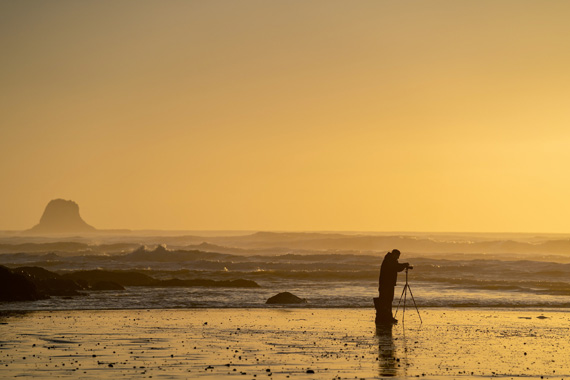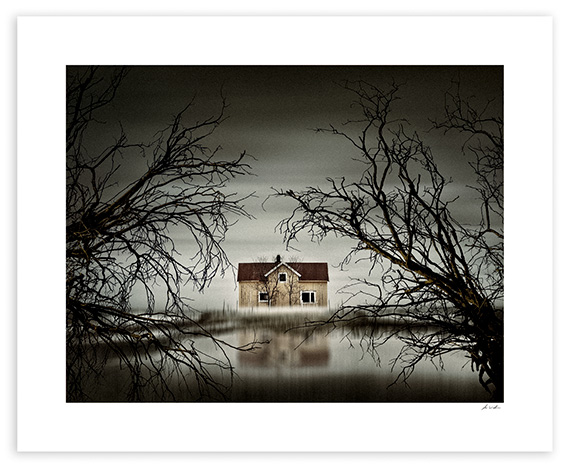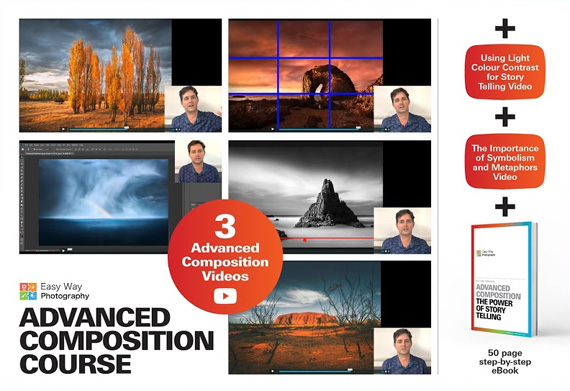This article is based on concepts from The Advanced Composition Course (currently 93% off) if you want to dig deeper for further training.
You know the phrase, “A picture says a 1,000 words.” However, if we assemble 1,000 random words, will they make an interesting story? Probably not as often as we would like.

Photo by Lei Jiang; ISO 100, f/4.5, 1/2500s, 200mm
You see, a photo—like a good story—must be focused. And a photo is only as good as the story it tells.
If we show up without much thought and capture whatever we see, all we end up with are 1,000 jumbled words that no one wants to read.
If we are not sure of the story ourselves, how can we expect our viewers to understand what it is we are trying to say?
It’s about being aware and purposeful. Your story might be as simple as wanting to show your viewers how beautiful some river pebbles are as the first drops of rain come to rest. Or maybe how peaceful and calm reflections on a lake are. Or how beautiful the sunset is over the lake.
Once you begin pondering the story, then you can ask yourself:
- Is there a subject to help tell my story?
- What composition would best suit that subject and the story that I am trying to tell?
- Which shutter speed might best portray that feeling?
- Are there any distractions I should omit from the frame?
You see, every decision we make with regards to how the photo is to be captured can help or hinder the story we are trying to tell. The more cohesion within these subtle details, the clearer your story will be.
When we edit our photos, the same applies: we try and edit to create the feeling or mood that suits our stories. Sometimes that can be as simple as trying to communicate what it felt like to witness an incredible sunrise, as the sun rose over the ocean and the first rays of light reflected off the wet rocks.
Now we are getting romantic!
Practice being mindful of the story and then, as your skills in visual communication increase, you can begin to express deeper and more personal emotions within your photography.
A great example is shutter speed. On a stormy day by the ocean, if we are trying to tell the story of the wind and the crashing waves, then what shutter speed would help convey that feeling? If we choose 30 seconds, we will capture a very calm photo with no hint of waves or motion of the wind. However, if we decide on a one-second shutter speed, we will capture just enough motion to show the wind whipping off the waves and the explosion of the waves crashing over the rocks.
Which shutter speed we choose can have a huge effect on the story we tell.

Above is one of my emotionally deeper photos. I wonder if you can feel a little hint of what I was trying to say?
For Further Training:
This full in-depth Advanced Composition Course is currently 93% off today if you want to check it out. Once you arrive at the advanced levels of composition it is no longer about leading lines or natural framing, it is not the rule of thirds or the golden ratio.
Advanced Composition is the ability to use these guides to arrange the elements and create a story that has the power to communicate our thoughts, stories, passions, and emotions to our audience through our photography. It also comes with a generous 365 day happiness guarantee so there’s no risk in trying it.
Deal ending soon: The Advanced Composition Photography Course at 93% Off
Go to full article: How to Tell a Story with Your Photos
What are your thoughts on this article? Join the discussion on Facebook
PictureCorrect subscribers can also learn more today with our #1 bestseller: The Photography Tutorial eBook
The post How to Tell a Story with Your Photos appeared first on PictureCorrect.
from PictureCorrect https://ift.tt/3pAwosP
via IFTTT







0 kommenttia:
Lähetä kommentti